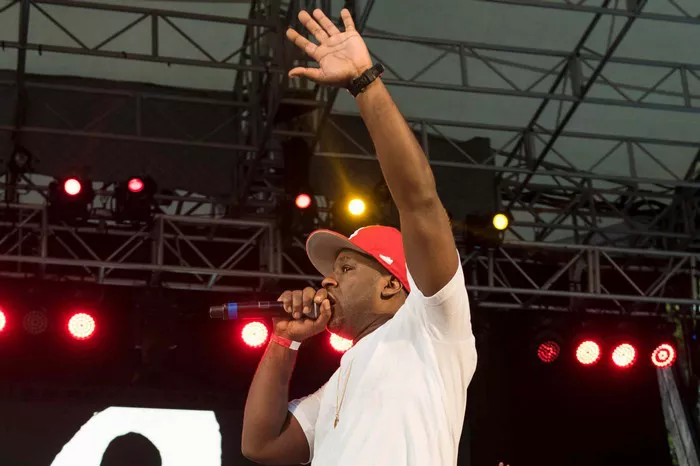In the vibrant landscape of hip-hop, there exists a subgenre that pulsates with energy, rhythm, and positivity: upbeat rap. This distinctive style of rap music has been gaining traction in recent years, captivating audiences with its infectious beats, lively melodies, and uplifting lyrics. As an evolving genre within the larger framework of hip-hop, upbeat rap offers a refreshing alternative to the often gritty and confrontational themes that characterize traditional rap music. In this article, we will delve into the essence of upbeat rap, exploring its origins, defining characteristics, notable artists, and cultural impact.
Origins and Evolution
The roots of upbeat rap can be traced back to the early days of hip-hop culture, where artists began experimenting with more upbeat and danceable rhythms. While the genre initially emerged as a response to the social and economic challenges faced by inner-city communities, it gradually evolved to encompass a broader range of themes and styles. One of the earliest examples of upbeat rap can be found in the work of artists like Grandmaster Flash and the Furious Five, whose 1982 hit “The Message” blended catchy melodies with socially conscious lyrics.
Throughout the 1980s and 1990s, upbeat rap continued to evolve, drawing inspiration from various musical genres such as funk, soul, and disco. Artists like LL Cool J, MC Hammer, and Salt-N-Pepa embraced a more upbeat and accessible sound, incorporating elements of pop music into their songs. This fusion of styles laid the groundwork for the emergence of upbeat rap as a distinct subgenre within hip-hop.
Defining Characteristics
At its core, upbeat rap is characterized by its infectious rhythms, catchy melodies, and positive lyrical content. Unlike traditional rap music, which often explores themes of struggle, violence, and social injustice, upbeat rap tends to focus on more lighthearted topics such as love, success, and self-expression. The beats are typically fast-paced and danceable, encouraging listeners to move and groove to the music.
One of the defining features of upbeat rap is its emphasis on positivity and optimism. Artists within this subgenre often use their music as a platform to uplift and inspire their audience, delivering messages of hope, resilience, and empowerment. Whether celebrating personal achievements or spreading messages of unity and solidarity, upbeat rap offers a refreshing counterbalance to the darker themes commonly associated with hip-hop.
Another hallmark of upbeat rap is its crossover appeal. With its catchy hooks and infectious rhythms, upbeat rap has found success not only within the hip-hop community but also in mainstream popular culture. Artists like Drake, Kanye West, and Kendrick Lamar have all incorporated elements of upbeat rap into their music, helping to introduce the genre to a broader audience.
Notable Artists
Over the years, a number of artists have emerged as pioneers and ambassadors of upbeat rap, shaping the sound and style of the genre. One such artist is Chance the Rapper, whose blend of gospel-infused melodies and positive lyricism has earned him widespread acclaim. Songs like “No Problem” and “Blessings” exemplify Chance’s upbeat approach to rap music, celebrating his faith, community, and personal journey.
Another influential figure in the world of upbeat rap is Pharrell Williams, whose production work with The Neptunes helped to define the sound of early 2000s hip-hop. With his catchy hooks and eclectic musical sensibilities, Pharrell has left an indelible mark on the genre, producing hits for artists like Jay-Z, Snoop Dogg, and N.E.R.D. His solo work, including the chart-topping single “Happy,” further solidified his reputation as a pioneer of upbeat rap.
Other notable artists within the upbeat rap genre include Anderson .Paak, whose soulful vocals and funky instrumentals have earned him critical acclaim, and Kid Cudi, whose introspective lyrics and melodic flows have resonated with audiences around the world. These artists, along with many others, continue to push the boundaries of upbeat rap, infusing the genre with fresh sounds and innovative ideas.
Cultural Impact
The rise of upbeat rap has had a profound impact on both the hip-hop community and popular culture at large. By offering an alternative to the often negative and pessimistic themes of traditional rap music, upbeat rap has helped to broaden the appeal of hip-hop, attracting new listeners and breaking down stereotypes.
Moreover, upbeat rap has served as a source of inspiration and empowerment for countless individuals, providing a soundtrack for celebrations, milestones, and moments of triumph. Whether blasting through car speakers at a summer barbecue or pumping through headphones during a workout, upbeat rap has become an integral part of the cultural fabric, uniting people from all walks of life in a shared appreciation for music and rhythm.
Conclusion
In conclusion, upbeat rap represents a dynamic and vibrant corner of the hip-hop landscape, characterized by its infectious beats, positive vibes, and uplifting messages. As the genre continues to evolve and expand, it will undoubtedly leave an indelible mark on the world of music and culture, inspiring future generations of artists and listeners alike. So, the next time you’re in need of a musical pick-me-up, look no further than the infectious rhythms and uplifting lyrics of upbeat rap.

